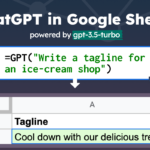If you’ve ever wished to automate WhatsApp conversations with an AI-powered chatbot, integrating DEEPSEEK with WhatsApp might be just what you need. Whether you’re a business looking to enhance customer support or a developer experimenting with AI, this guide will take you through the entire process—step by step.
Now, let’s get started!
Why Integrate DEEPSEEK with WhatsApp?
There are plenty of reasons why linking DEEPSEEK AI with WhatsApp makes sense:
- 24/7 Customer Support – AI chatbots don’t sleep, so they can answer queries round the clock.
- Quick Responses – No more delays; AI instantly replies with accurate answers.
- Seamless Automation – DEEPSEEK can handle FAQs, process orders, and even schedule appointments.
- Improved User Engagement – Customers get instant, intelligent replies instead of waiting for a human agent.
Now, let’s look at what you’ll need to make this work.
Prerequisites for Integration
Before diving into the setup, ensure you have the following:
| Requirement | Description |
|---|---|
| WhatsApp Business API | Used for sending/receiving messages automatically. |
| DEEPSEEK API Key | Needed to access DEEPSEEK AI’s chatbot capabilities. |
| Twilio or Meta Cloud API | Acts as a bridge between WhatsApp and your chatbot. |
| A Hosting Server | To deploy your backend middleware (e.g., AWS, Firebase, Heroku). |
| Basic Coding Knowledge | Familiarity with Python or Node.js helps in the implementation. |
Step-by-Step Guide
1. Set Up WhatsApp Business API
To send and receive automated messages, you need access to the WhatsApp Business API. Here’s how:
- Register on Meta Cloud API (formerly Facebook Business API) – Sign up here.
- Verify Your Business – Submit business details for approval.
- Use Twilio or Vonage for WhatsApp Integration – Twilio WhatsApp API allows you to send messages programmatically.
- Generate API Credentials – Once approved, you’ll receive an API key.
2. Get Access to DEEPSEEK API
DEEPSEEK AI provides NLP-based chatbot solutions. You need an API key:
- Sign up on the DEEPSEEK Platform – Register here.
- Go to the Developer Section – Locate the API documentation.
- Generate an API Key – This will allow your bot to interact with users.
3. Develop a Middleware to Connect APIs
Now, let’s create a simple Flask (Python) middleware to connect WhatsApp API with DEEPSEEK:
from flask import Flask, request
import requests
from twilio.twiml.messaging_response import MessagingResponse
app = Flask(__name__)
DEEPSEEK_API_KEY = "your_deepseek_api_key"
# Function to query DeepSeek
def query_deepseek(prompt):
api_url = "https://api.deepseek.com/v1/chat/completions"
headers = {"Authorization": f"Bearer {DEEPSEEK_API_KEY}", "Content-Type": "application/json"}
payload = {"model": "deepseek-chat", "messages": [{"role": "user", "content": prompt}]}
response = requests.post(api_url, json=payload, headers=headers)
return response.json().get("choices", [{}])[0].get("message", {}).get("content", "Error: No response")
@app.route("/webhook", methods=["POST"])
def whatsapp_webhook():
incoming_msg = request.form.get("Body", "")
resp = MessagingResponse()
ai_response = query_deepseek(incoming_msg)
resp.message(ai_response)
return str(resp)
if __name__ == "__main__":
app.run(port=5000, debug=True)
4. Deploy and Test Your Integration
1. Run the Flask app locally:
python app.py2. Expose it using Ngrok:
ngrok http 50003. Update Twilio Webhook with the Ngrok URL.
4. Test by sending a WhatsApp message – You should get a response from DEEPSEEK!
FAQs
Yes, WhatsApp API is only available for business accounts. You must register through Meta Cloud API.
Both Twilio and DEEPSEEK offer free tiers, but costs may apply for higher usage.
Absolutely! The same logic applies; just use Express.js and Axios to handle API requests.
You can use AWS Lambda, Firebase Functions, or DigitalOcean for cloud deployment.
Yes, tools like Make (formerly Integromat) and Zapier offer low-code automation, but they may have limitations.








